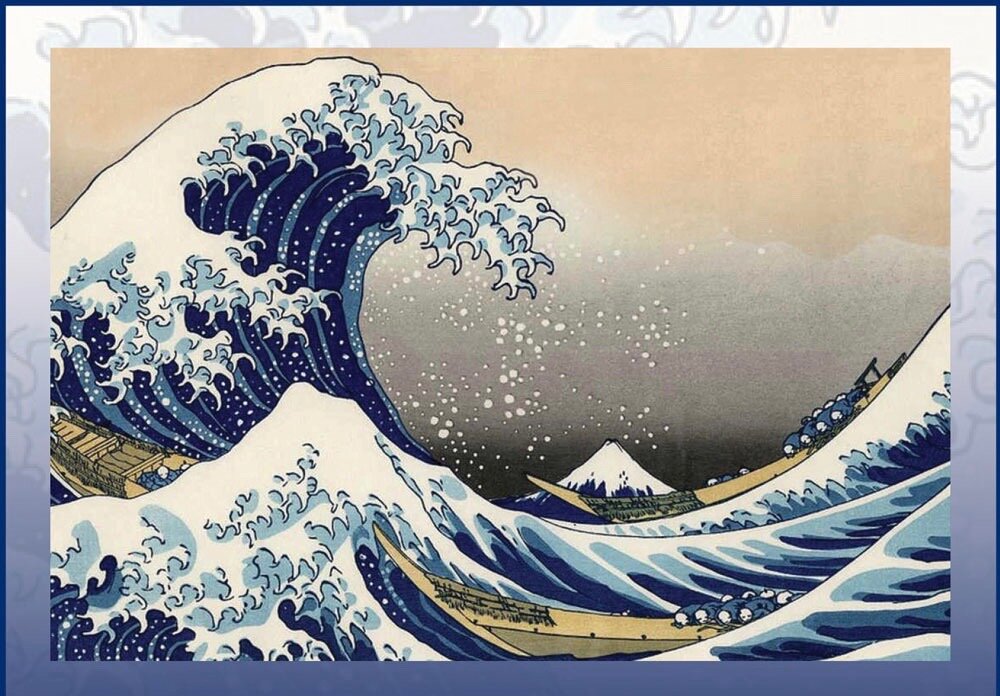In Mindfulness: A Practical Guide to Awakening, Joseph Goldstein quotes Sayadaw U Tenjaniya on the importance of Mindfulness of the Mind which is the Third Foundation of Mindfulness: “One thing you need to remember and understand is that you cannot leave the mind alone. It needs to be watched constantly. If you do not look after your garden it will overgrow with weeds. If you do not watch your mind, defilements will grow and multiply. The mind does not belong to you, but you are responsible for it.”
The Third Foundation of Mindfulness asks us to look into our own minds and contemplate two aspects - the contents of the mind and the nature of the mind.
Feeling tone is one of the movements of mind we became aware of in The Second Foundation of Mindfulness. Now we widen the field to bring awareness to anything happening in the mind that we can catch hold of - thoughts, moods, feelings, emotions, memories, fantasies, plans, stray images. This is slippery work as we tend to get caught in the content of a thought and get carried away. And our thoughts arise about practically everything going on in our minds. If we feel anger or pain, our mind rises up in protest and a dust storm of thoughts and feelings can clog our minds for hours - unless we take a step back and look at the dust storm itself. We may or may not halt the progress of the dust storm and that is not as important as simply holding it in awareness and allowing it, without pushing it away, encouraging it, or judging ourselves for having it. With patience, we will realize the dust storm was, like all storms, impermanent and passes out of the mind.
The other key practice instruction is to bring awareness to our mind’s tendency to identify with the dust storm as “my dust storm”, that “I created”. It’s simply a dust storm kicked up by the arising of anger or pain and our aversion to them. It didn’t arise because we engineered it or instructed it to.
As we look at these contents of the mind, we notice the connectivity of thoughts. Each thought arises out of a thought and leads to another thought in what appears to be an unbroken progression from one fantasy or thought to another fueled by desire or aversion or confusion. There may be an initial thought - that might have arisen from an external events or a bodily sensation - that triggers the progression and there may be an apparent halt to the thinking as a new external event intervenes or awareness arises and periods of calm ensue.
As we step back from our thoughts, we can begin to discern whether this thought or emotion or mind state is wholesome or unwholesome. And that is what the Third Foundation of Mindfulness asks us to do. It asks us to discern as we practice whether our minds are in a state of wanting or lusting or craving or whether they are free from wanting or lusting or craving. Similarly, are our minds in a state of anger or free from anger? Distracted or contracted? Deluded or free from delusion? and other qualities along the path to freedom including whether the mind is liberated or un-liberated.
As our minds settle in mindfulness and concentration, we naturally begin to discern if we are identifying with these states or not. Are we the creators of these mind states? Did we decide to have them? Or did they arise out of causes and conditions without our orchestration?
And then as our practice deepens and we become aware of more and more subtle movements in the mind, we may begin to discern that these mind states arise and pass away moment by moment - a breath, a sound, a thought, a sensation, a pain, a relief, a joy, another breath. And beyond that, we begin to see that these mind moments are passing more and more rapidly as we discern smaller and smaller units of change until we begin to see the mind movements as a continual process, moving and changing, shifting, arising and passing away in a flow of activity not under our control.
We approach the understanding that our minds operate both as waves of activity and as a series of discrete particles (mind moments) arising one after another. According to Cynthia Thatcher’s article in Tricycle, “How Long is a Moment?” (Winter 2006), a practice moment is around 1 to 3 seconds long. However, a unit of consciousness is considerably faster than that - millions of times faster than that. As we practice, we begin to discern some of these flashes of consciousness within the space of one breath or one step or one movement of the hand toward the door handle.
And with these flashes, we begin to approach the nature of reality and long with it the perception of impermanence, the unsatisfactoriness, the impersonality.
As Bhikku Bodhi says in The Noble Eightfold Path, as “mindfulness becomes clearer, it remains intently aware, watching its own process of becoming…[dissolving] into streams of [mind moments] flashing into and out of being, moment by moment, coming from nowhere and going nowhere, yet continuing in a sequence without pause.”

